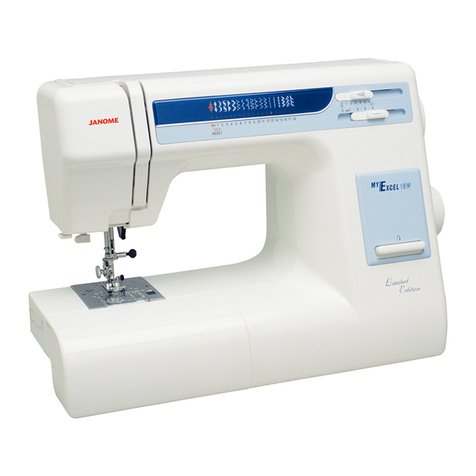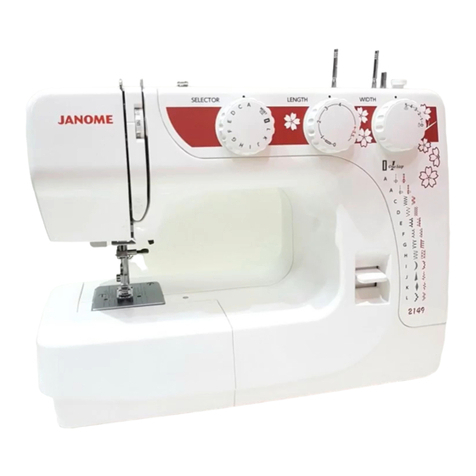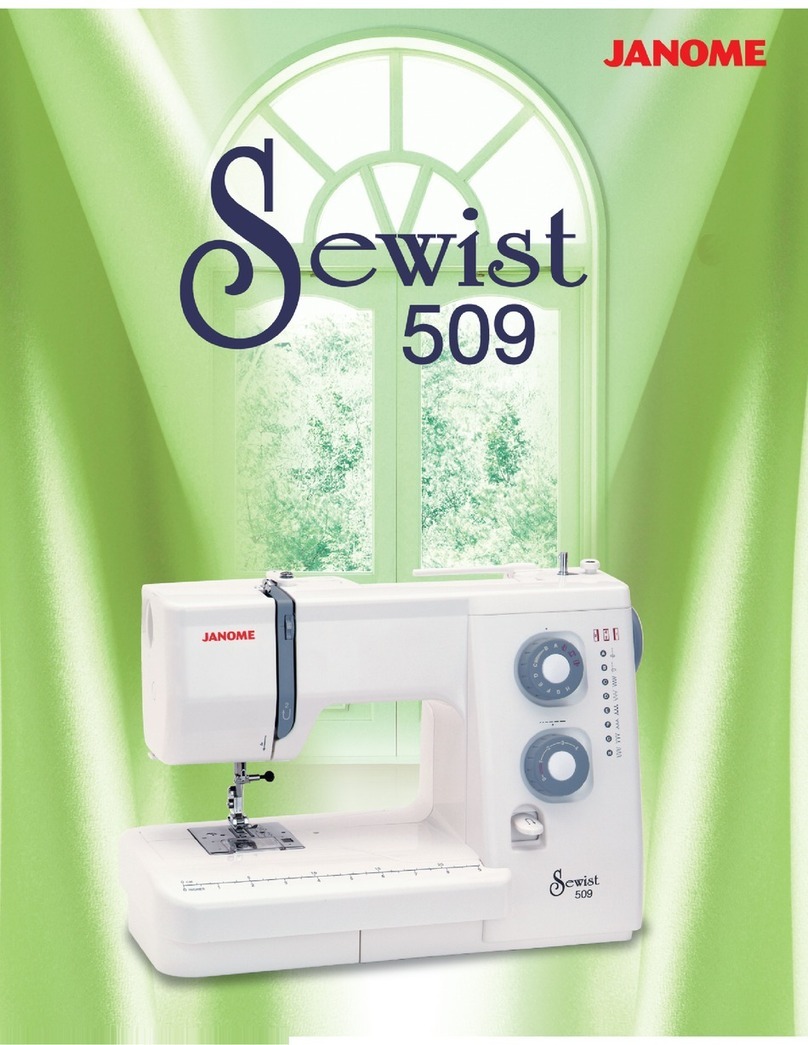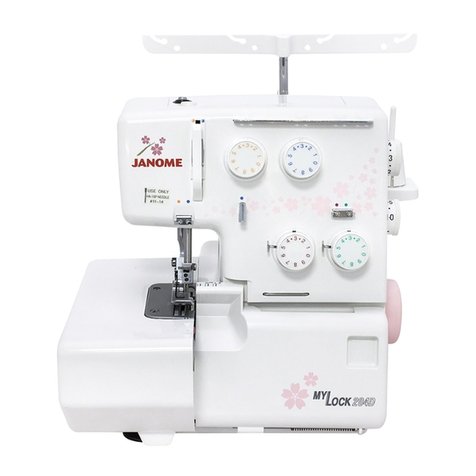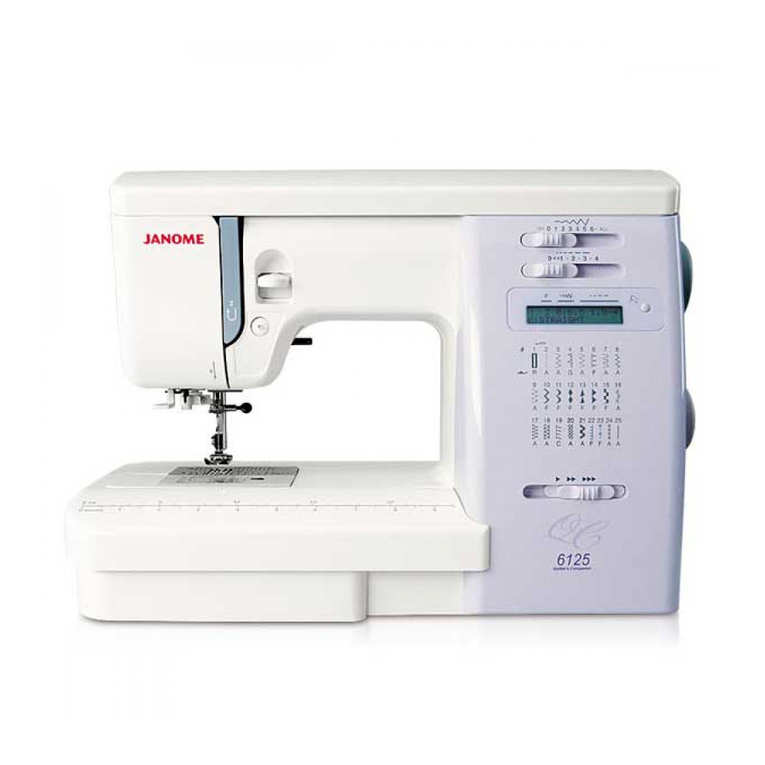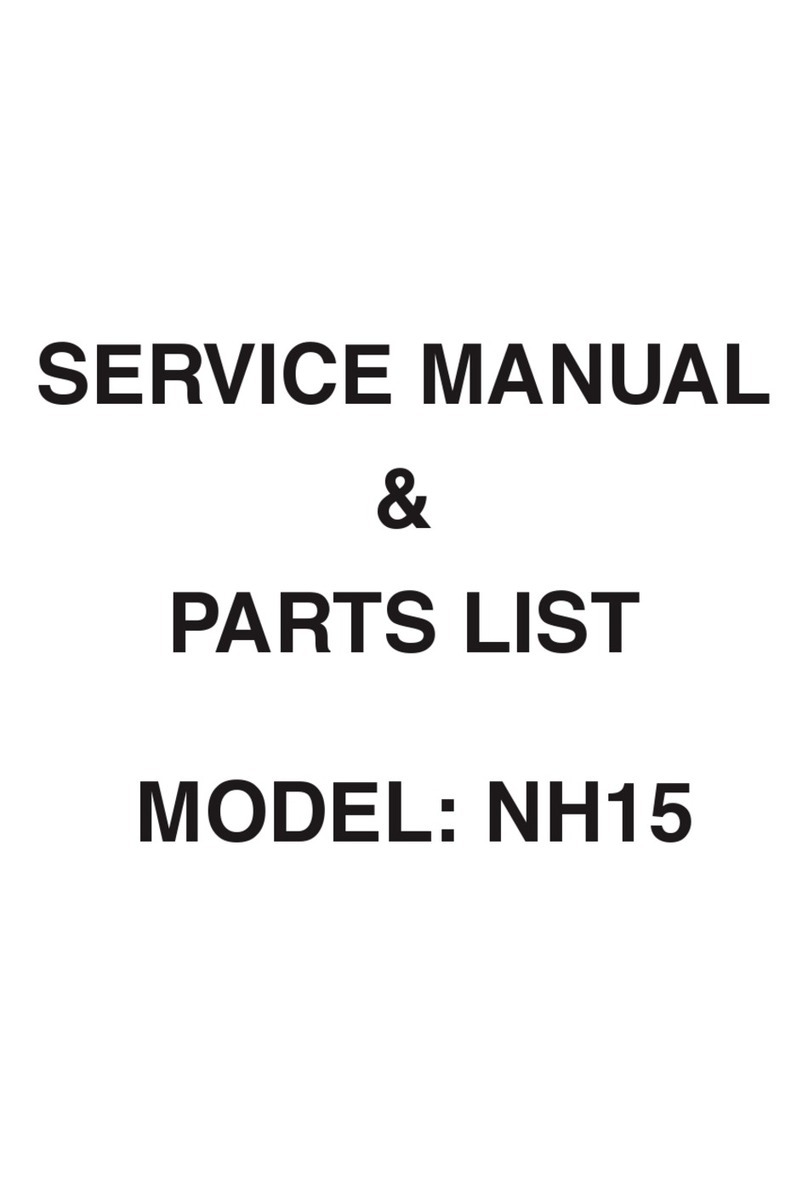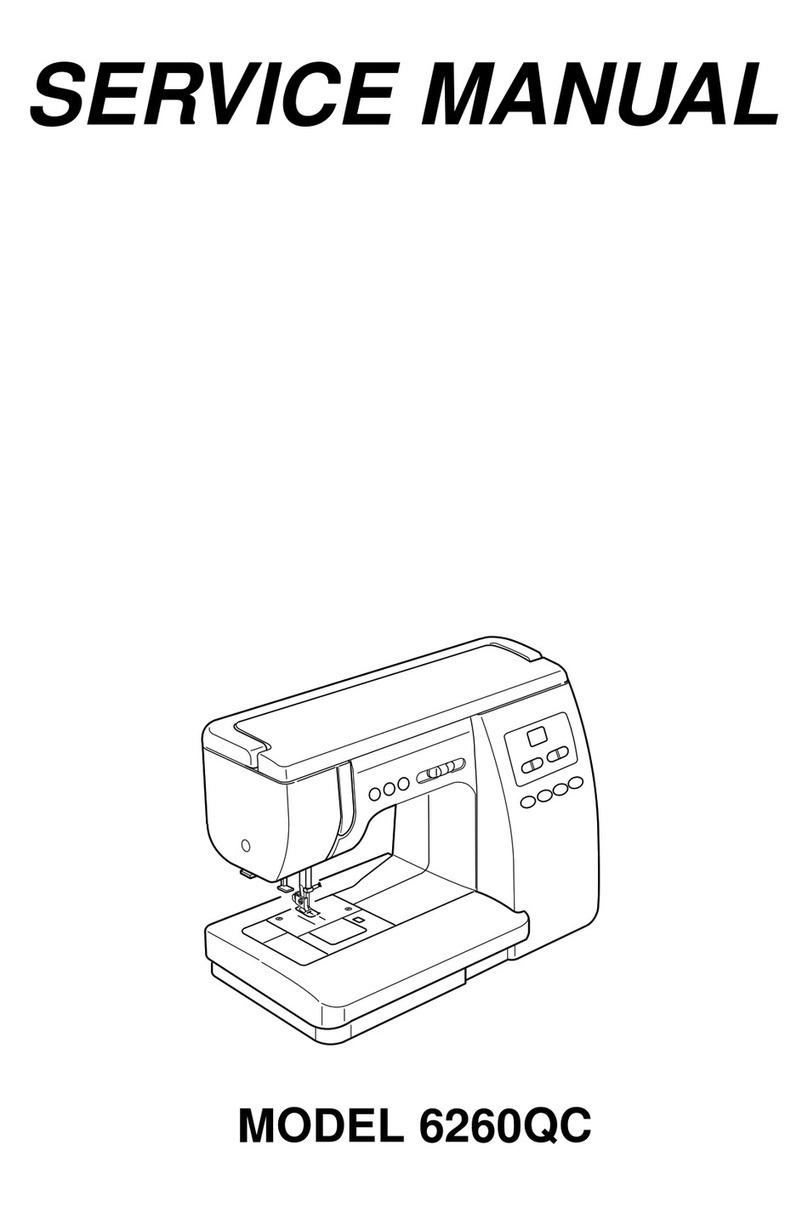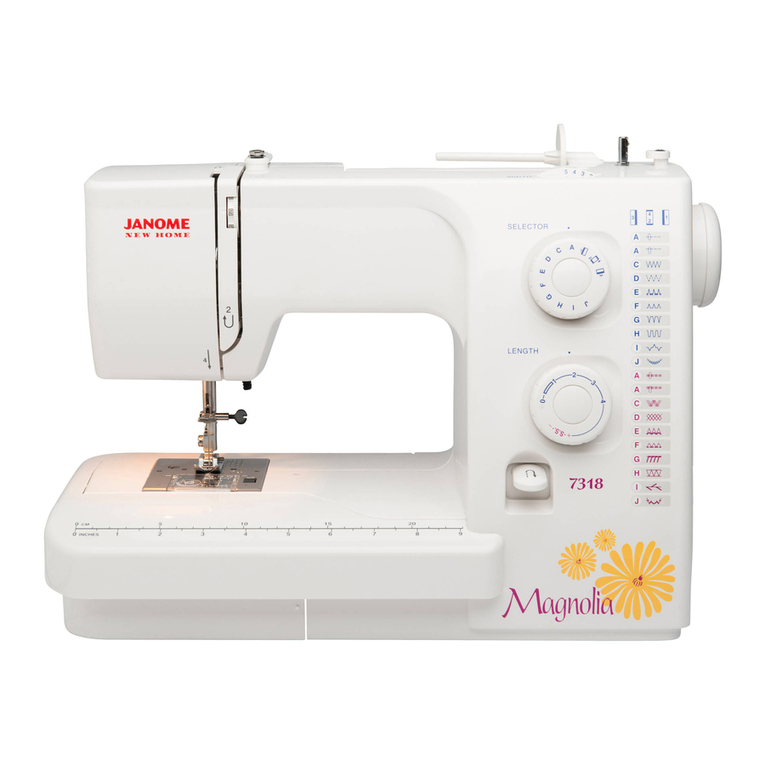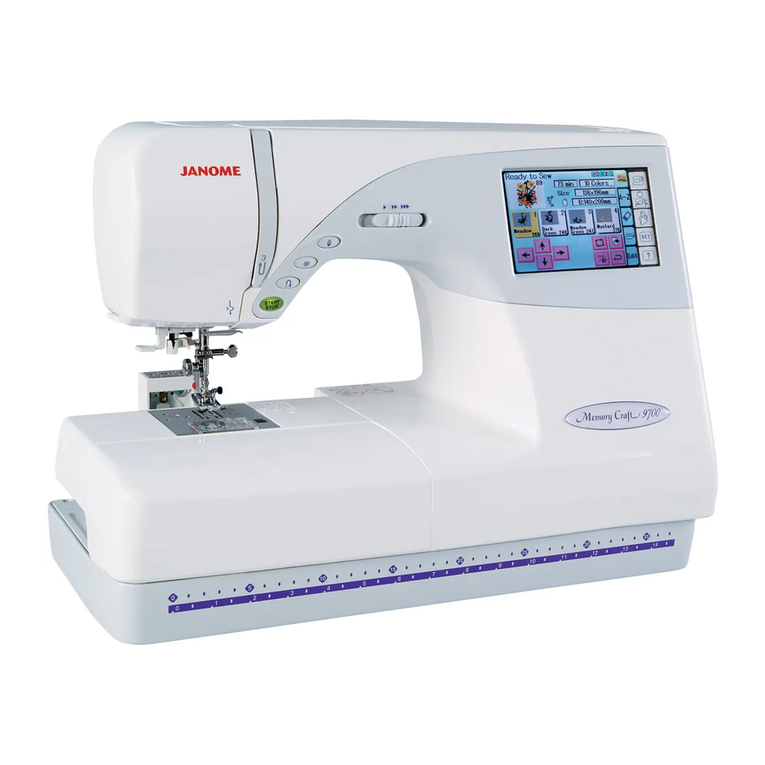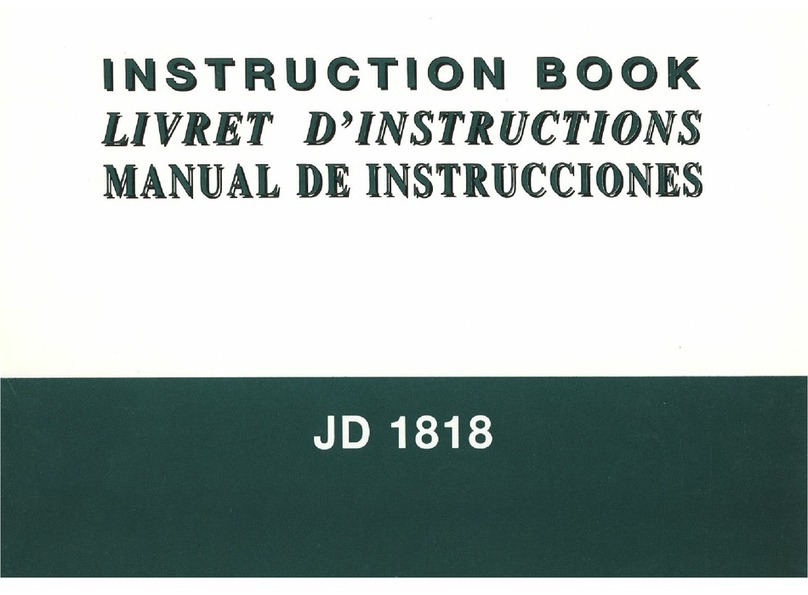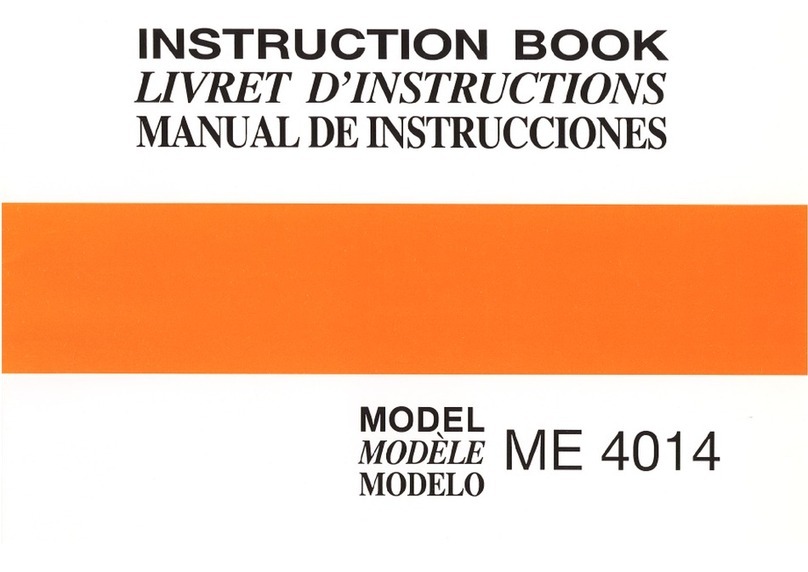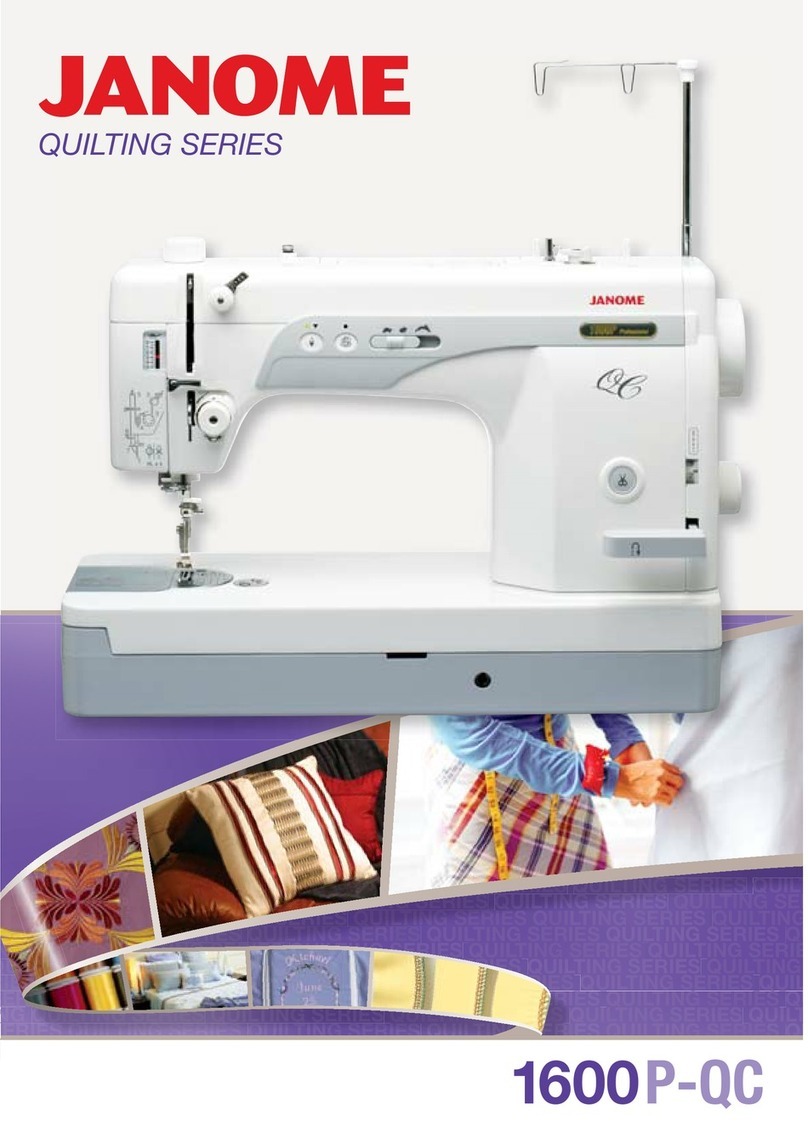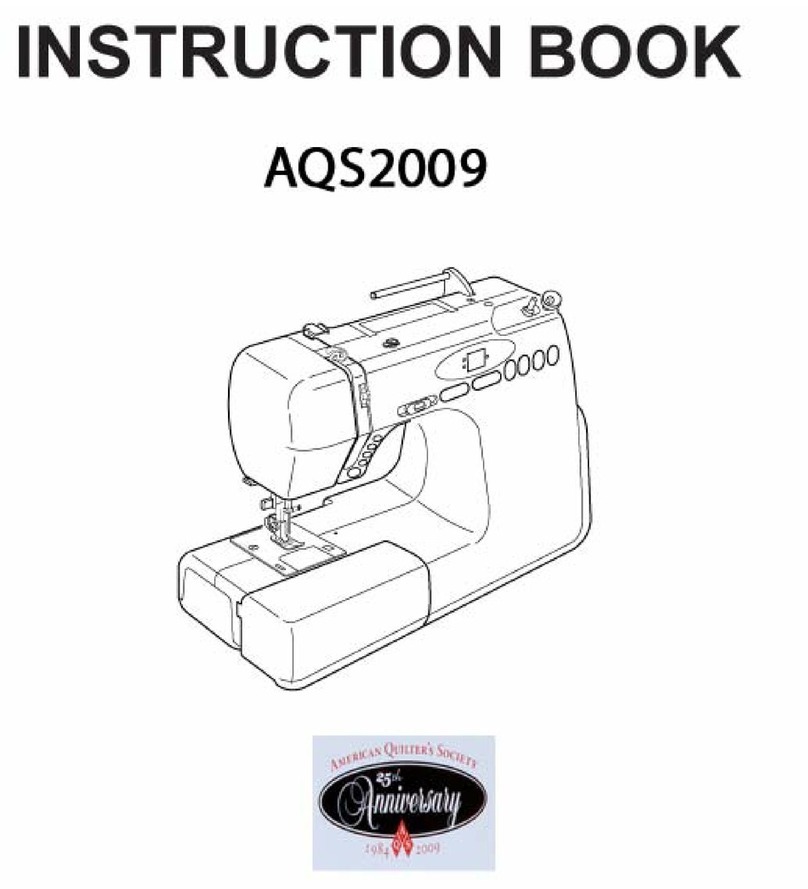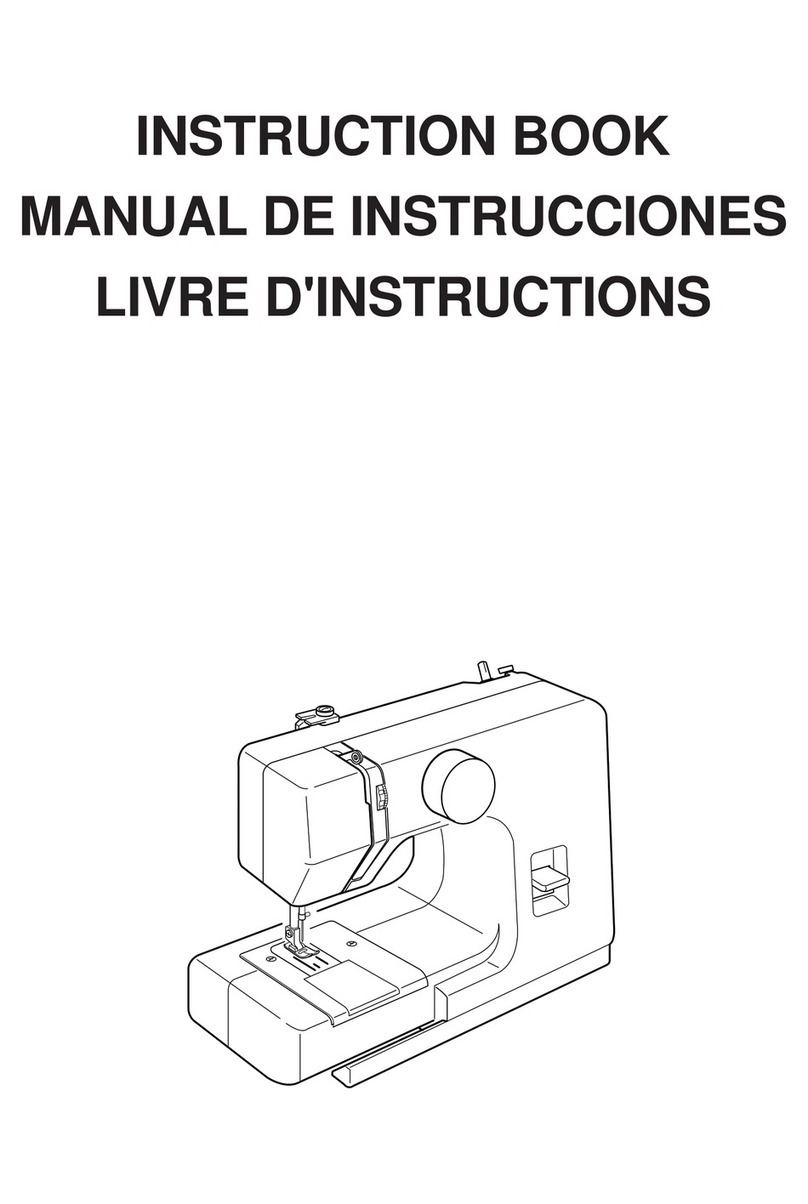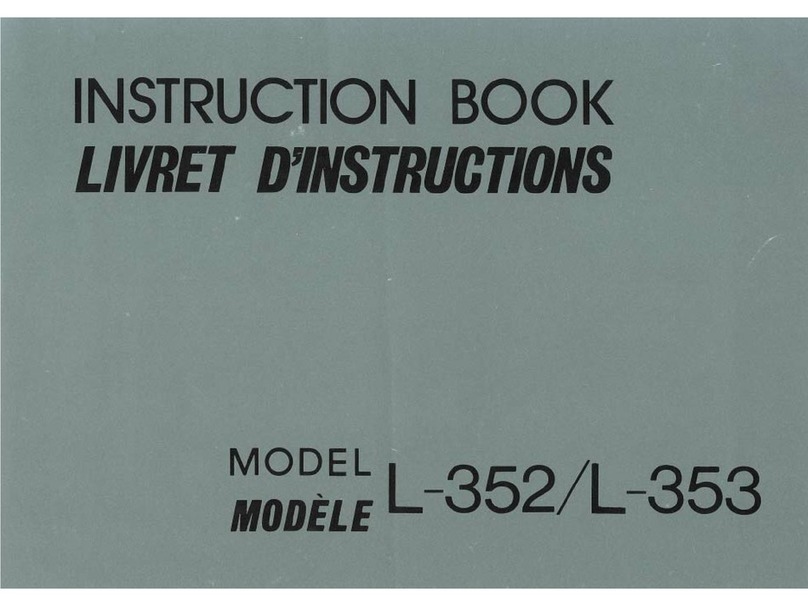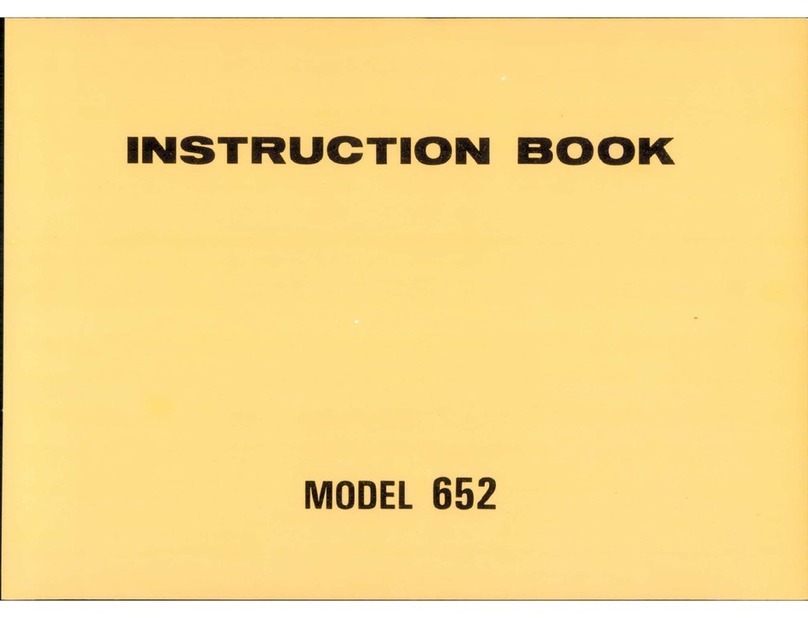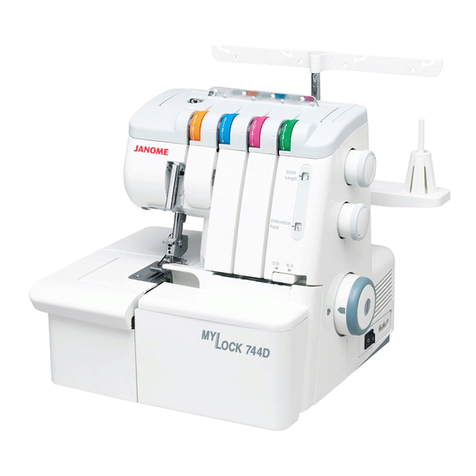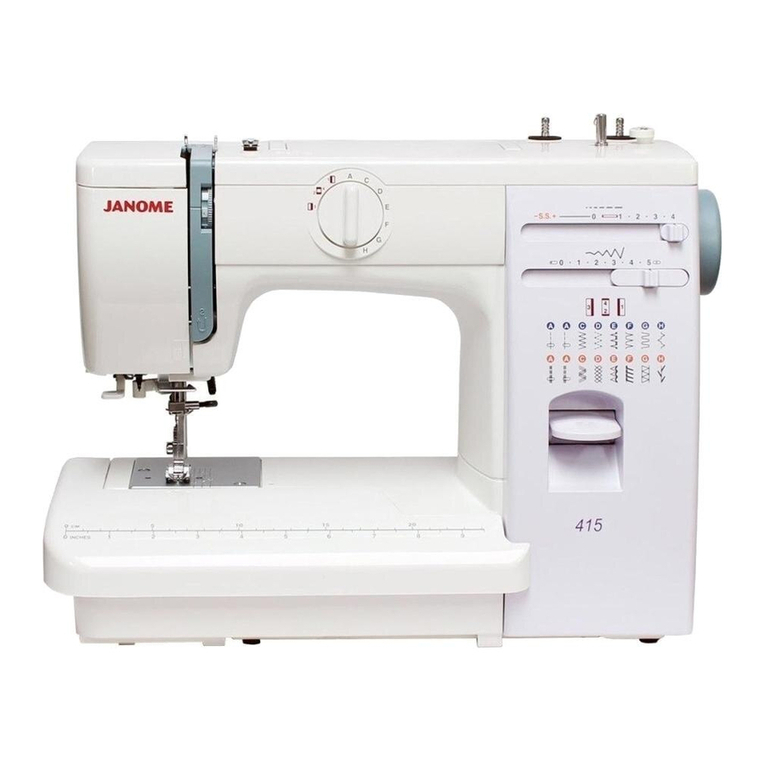
1. Spool Pin – This ho ds your thread as
you sew.
2. Bobbin winder spindle – Ho ds the bob-
bin in p ace when winding bobbins.
3. Bobbin release – Once your thread fi s
the bobbin, this re eases, causing bobbin
winding to stop.
4. Stitch width dial – Contro s the width of
your stitch. Higher number equa s a wider
stitch. Use this on zig zag stitches.
5. Stitch Selection dial – Use this to se ect
from the various stitches on your machine.
Computerized machines may have buttons
and an LCD screen to indicate stitch se ec-
tion.
6. Handwheel – Use this to manua y raise
and ower the need e from the fabric. A -
ways turn the handwhee toward you.
7. Stitch length dial – Use
this to change the ength of
your stitch. A higher number indi-
cates a onger stitch. The ongest set-
ting is ca ed a basting stitch, and is used
to ho d fabrics together temporari y.
8. Reverse stitch lever – Use this to sew
backward. Predominant y used to ock
stitches at the start and end of seams.
9. Power Switch – Turns machine power
on and off.
10. Bobbin winder tension guide – Regu-
ates the tension on the thread when wind-
ing a bobbin. Use your manua or use
indicators on the machine to determine the
threading process for bobbin winding.
11. Thread tension dial – Contro s the ten-
sion of your top thread. A higher number in-
dicates more tension app ied to the thread.
12. Thread take-up lever – Moves up and
down with the need e bar as you sew.
13. Needle clamp screw – Ho ds the nee-
d e in p ace. Loosen to remove an o d nee-
d e, put a new need e in p ace, then tighten
to secure the need e.
14. Presser Foot – Is raised and owered
using a ever on the back or right side of
the need e bar. When down, ho ds fabric in
p ace for sewing. When it is raised it re-
eases thread tension. A ways thread the
machine with the presser foot in the raised
position.
15. Bobbin cover – Covers the bobbin
area whi e sewing.
16. Bobbin cover release button – Push to
re ease the bobbin case cover and insert a
new bobbin.
17. Feed dog – Group of ‘teeth’ that feed
fabric forward when sewing. Some ma-
chines have a ever to drop the feed dogs,
enab ing the user to feed fabric manua y
(not recommended for beginners – used
for specia app ications).
18. Needle – Moves up and down to cre-
ate stitches.
19. Needle plate – a meta p ate beneath
the need e and presser foot. Often con-
tains markings to aid in stitch p acement.
Contains an opening for the need e, and
one for the feed dogs.
Specia thanks to sew4home.com.
18
19
17
9
8
5
13
14
16
15
7
6
11
142
3
10
12
Use this se ing machine
map to help you get
acquainted ith the
parts of your se ing
machine.
